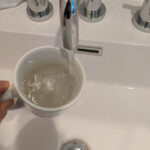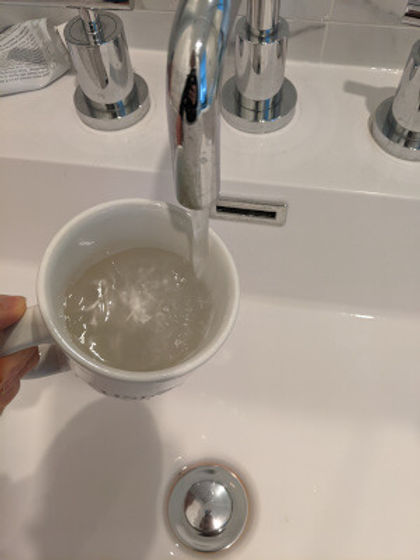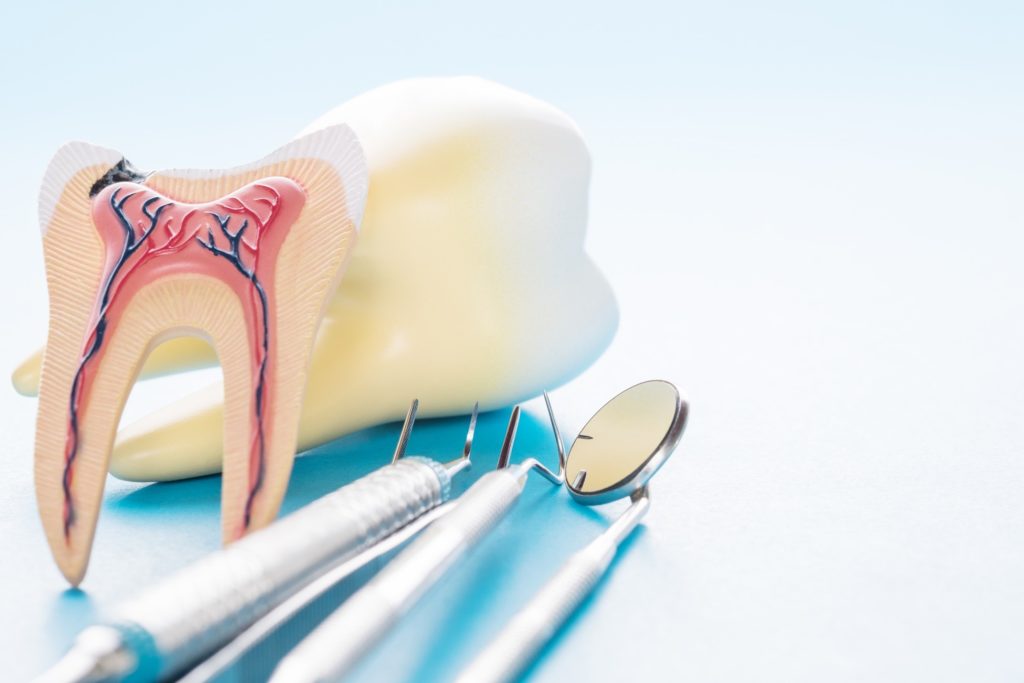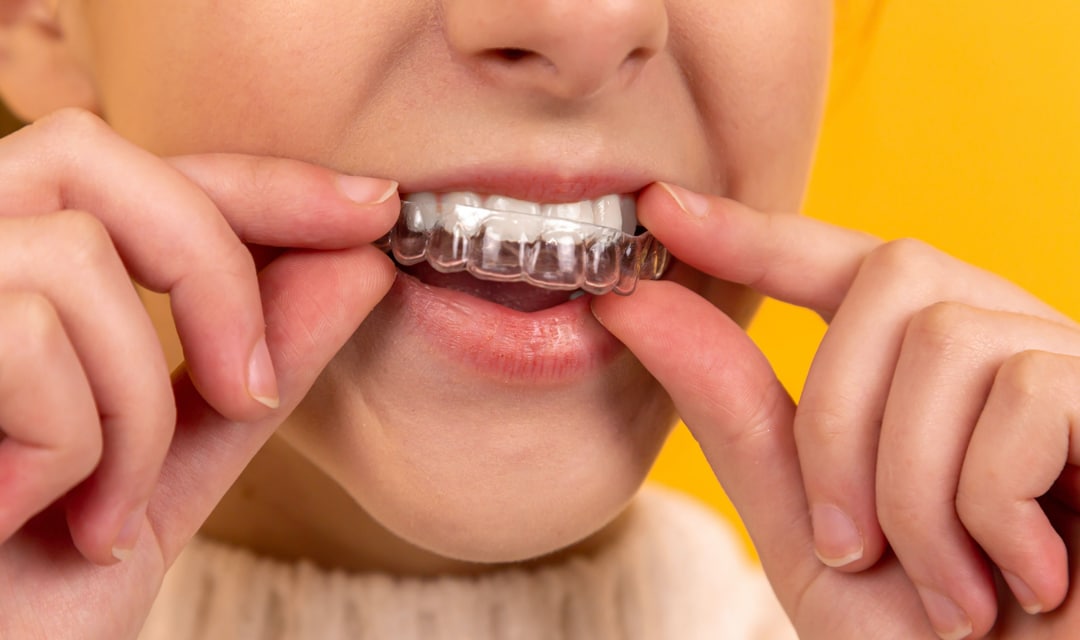Accidentally rinsing your mouth after a tooth extraction can be concerning, but don’t worry too much. To help, avoid swishing vigorously and try not to spit forcefully for the next few hours. If bleeding occurs, bite gently on a clean gauze pad. Stick to a soft diet, avoid hot or spicy foods, and follow prescribed medications for pain.
Keep good oral hygiene with a gentle brush and a mild, alcohol-free mouthwash. If you have concerns, contact your dentist. Despite the mishap, proper care moving forward will still support the healing process, and things should be okay.
What to Do Right After Accidentally Rinsing?
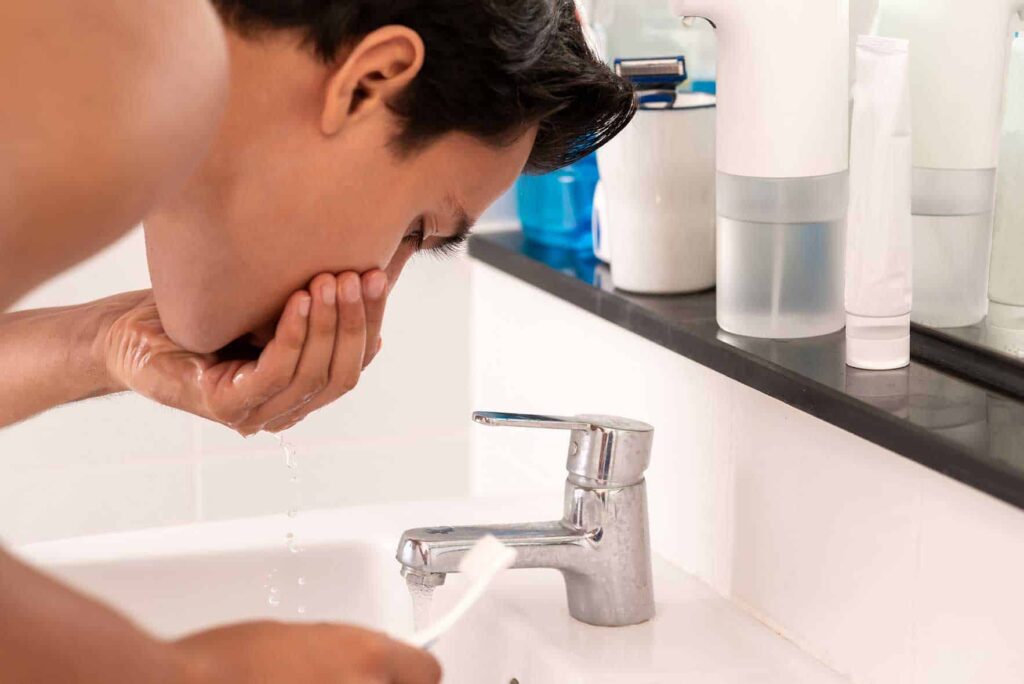
Rinse the mouth gently with a saline solution to remove any debris without disrupting the blood clot that forms after extraction. This helps maintain oral hygiene without compromising the healing process.
Refrain from vigorous swishing or using mouthwash immediately after accidental rinsing. Excessive movement may dislodge the blood clot, leading to complications like dry socket.
Bite gently on a sterile gauze pad to promote the formation and stabilization of the blood clot. This assists in controlling bleeding and supports the initial stages of healing.
Common Mistakes to Avoid
Avoid using harsh mouthwashes containing alcohol or strong chemicals, as they can irritate the extraction site. Opt for a mild, alcohol-free rinse if necessary.
Refrain from touching the extraction site with fingers, tongue, or any objects. Keeping the area undisturbed promotes a more seamless healing process.
Steer clear of hot or spicy foods and beverages that can potentially cause irritation and discomfort to the sensitive extraction site. Stick to a soft and cool diet initially.
Stick to any prescribed medications or post-operative instructions provided by the dentist. Skipping medications may compromise pain management and hinder the healing process.
Avoid smoking or using tobacco products as they can impede the healing of the extraction site and increase the risk of complications.
Minimize strenuous physical activities that can elevate blood pressure and disrupt the blood clot. Rest and allow the body to focus on the initial stages of healing.
What are the risks of improper care after tooth extraction?
Dry Socket (Alveolar Osteitis)
Insufficient post-extraction care can lead to the dislodgment of the blood clot, resulting in dry socket. This painful condition exposes the bone and nerves in the socket, delaying healing and causing significant discomfort.
Infection at the Extraction Site
Poor oral hygiene practices may introduce bacteria into the extraction site, increasing the risk of infection. Infections can manifest as localized swelling, redness, and may lead to systemic complications if left untreated.
Delayed Healing and Wound Closure
Failure to follow prescribed care measures can impede the natural healing process, resulting in delayed wound closure. This prolongs discomfort and extends the recovery period.
Excessive Bleeding
Improper actions, such as vigorous rinsing or engaging in activities that elevate blood pressure, may lead to excessive bleeding from the extraction site. This necessitates additional interventions to control bleeding.
Compromised Blood Clot Stability
Disruption of the initial blood clot’s stability is a common consequence of improper care. A stable blood clot is vital for protecting the extraction site and facilitating the formation of new tissue.
Prolonged Discomfort and Pain
Failure to manage pain effectively through prescribed medications and proper care measures can result in prolonged discomfort, affecting the individual’s overall quality of life during the recovery phase.
Why Recovery is Vital for Overall Oral Health
Proper recovery measures minimize the risk of infections, preventing the spread of bacteria to adjacent teeth or other areas of the oral cavity.
Proper care supports the preservation of surrounding teeth and soft tissues. Complications from improper care could potentially impact adjacent oral structures.
Following recommended recovery practices facilitates optimal healing and tissue regeneration at the extraction site, ensuring a seamless integration with the surrounding oral environment.
Proper care during the recovery period minimizes discomfort and pain, promoting a more comfortable and positive post-extraction experience.
Ensuring a smooth recovery helps prevent long-term complications, such as persistent pain, chronic infections, or issues with adjacent teeth, which may necessitate further dental interventions.
Successful recovery contributes to the patient’s overall well-being and satisfaction with the dental procedure. It enhances the patient’s confidence in future dental treatments and promotes a positive relationship with oral health care providers.
Tips for Recovery

Recovery after a tooth extraction involves gentle saline rinses, avoiding vigorous actions like swishing, and biting on sterile gauze to support clot formation. Additionally, follow a soft diet, stay hydrated, and maintain careful oral hygiene to ensure effective healing and minimize complications.
Soft Diet and Proper Nutrition
Importance of a Soft Diet
A soft diet is crucial post-extraction to prevent trauma to the healing site. It includes foods like yogurt, mashed potatoes, and soups, ensuring minimal chewing forces and promoting comfort during the initial healing phase.
Incorporating Nutrient-Rich Foods
Proper nutrition is essential for accelerated healing. Include foods rich in vitamins, minerals, and proteins, such as leafy greens, dairy, and lean proteins, to support tissue repair and boost overall immune function.
Hydration for Recovery
Staying adequately hydrated aids in the healing process. Water helps flush out toxins, promotes better circulation, and prevents complications like dry mouth, contributing to overall recovery.
Oral Hygiene Practices Without Disrupting Healing
Gentle Brushing Technique
Use a soft-bristled toothbrush and employ a gentle brushing technique to clean teeth while avoiding the extraction site. Gentle circular motions help maintain oral hygiene without disturbing the delicate healing process.
Avoiding Commercial Mouthwashes
Refrain from using commercial mouthwashes that may contain alcohol or harsh chemicals. Instead, opt for a dentist-recommended, alcohol-free mouthwash or a saltwater rinse to maintain cleanliness without causing irritation.
Careful Flossing Around the Area
If allowed by the dentist, continue flossing carefully, avoiding the extraction site. Flossing helps prevent plaque buildup and maintains gum health, but caution is necessary to prevent accidental disturbance of the healing socket.
Regular Dental Check-ups
Attend scheduled follow-up appointments with the dentist for professional assessment and guidance. Dental professionals can monitor the healing progress and provide specific recommendations tailored to individual recovery needs.
Managing Pain and Discomfort
Prescribed Medications
Take prescribed pain medications as directed by the dentist to manage discomfort effectively. Consistent adherence to the medication schedule helps maintain a controlled level of pain relief.
Cold Compress for Swelling
Applying a cold compress to the cheek near the extraction site helps reduce swelling and alleviate discomfort. Use the compress intermittently during the initial 24 hours post-extraction.
Elevating the Head While Resting
Elevating the head while resting or sleeping can minimize blood flow to the head, reducing swelling and discomfort. Use an extra pillow to keep the head elevated during the initial recovery period.
Avoiding Aspirin Products
Avoid the use of aspirin-containing products, as they can increase the risk of bleeding. Opt for acetaminophen-based pain relievers as recommended by the dentist for a safer pain management approach.
What are the stages of healing after tooth extraction?

Initial 24 Hours (Blood Clot Formation)
The first stage involves blood clot formation at the extraction site. It’s crucial to avoid actions that could dislodge the clot, such as vigorous rinsing or spitting. Biting on gauze helps control bleeding and promotes clot stability.
2-3 Days (Early Healing)
In the next phase, initial healing begins, and swelling and discomfort may peak. Following prescribed medications, applying cold compresses to reduce swelling, and maintaining a soft diet are essential during this period.
1 Week (Tissue Regeneration)
Tissue regeneration intensifies, and the extraction site starts to close. Patients may still experience some discomfort, but it gradually decreases. Oral hygiene practices should remain gentle to avoid disrupting the healing process.
2 Weeks (Continued Healing)
By the second week, most discomfort subsides, and the soft tissues continue to heal. Patients can often resume a more regular diet, gradually reintroducing solid foods. Oral hygiene practices should become more routine but still cautious.
4-6 Weeks (Advanced Healing)
Advanced healing occurs during this phase, with the extraction site closing further. Any residual swelling or discomfort should be minimal. Patients can typically resume normal oral hygiene practices and activities, but consultation with the dentist is crucial.
What to Expect During Each Phase
Initial Phase
Expect bleeding to be noticeable initially, but it should subside within a few hours. Mild swelling and discomfort are normal, and following post-operative care instructions is crucial to prevent complications.
Early Healing
Swelling and discomfort may peak around the second day but gradually decrease. Pain management becomes more manageable with prescribed medications and cold compresses. Focus on a soft diet and gentle oral hygiene practices.
Tissue Regeneration
The extraction site starts closing, and discomfort continues to diminish. Patients may notice a yellowish tint at the healing site, indicative of tissue regeneration. Follow-up appointments with the dentist are important for progress evaluation.
Continued Healing
Discomfort should be minimal, and patients can usually reintroduce solid foods into their diet. Oral hygiene practices become more routine, but care should still be taken not to disrupt the healing tissues.
Advanced Healing
By this stage, most discomfort, swelling, and other post-extraction symptoms should be resolved. The extraction site is well on its way to complete closure, and patients can generally resume normal activities, including a regular diet and oral hygiene routine.
FAQ
Can I swallow saliva after extraction?
Yes, it’s absolutely fine to swallow saliva after a tooth extraction. Swallowing won’t disrupt the blood clot or hinder the healing process. Just avoid vigorous spitting or rinsing.
How long after tooth extraction can I clean my mouth?
You can clean your mouth gently the day after the extraction. Use a soft-bristled toothbrush and be careful around the extraction site to avoid disturbing the healing process.
How do you know if you lost the blood clot after tooth extraction?
If you experience persistent bleeding, intense pain, or an unpleasant taste, it may indicate the loss of the blood clot. Contact your dentist promptly for guidance.
Can I put cotton after tooth extraction?
While it’s an outdated practice, some dentists may advise placing clean gauze or cotton to control initial bleeding. Follow your dentist’s specific instructions.
How many hours should I remove the cotton after tooth extraction?
Follow your dentist’s guidance on when to remove the cotton. Typically, it’s done after a couple of hours once bleeding has significantly reduced.
Can I brush my teeth with toothpaste after tooth extraction?
You can start gently brushing your teeth with toothpaste the day after the extraction. Be cautious around the extraction site to avoid irritation or disruption of the healing process.
Final thoughts
All things considered, if you accidentally rinsed your mouth after a tooth extraction, don’t panic. Take a deep breath and follow the tips provided for a smooth recovery. Avoid vigorous swishing, stick to a soft diet, and be gentle with your oral care routine. If you experience any concerns or discomfort, reach out to your dentist.
Remember, accidents happen, but with the right care moving forward, your healing process should still go well. Stay positive, follow the recommended steps, and don’t hesitate to seek professional advice if needed. Your dental team is there to support you on your journey to recovery.






